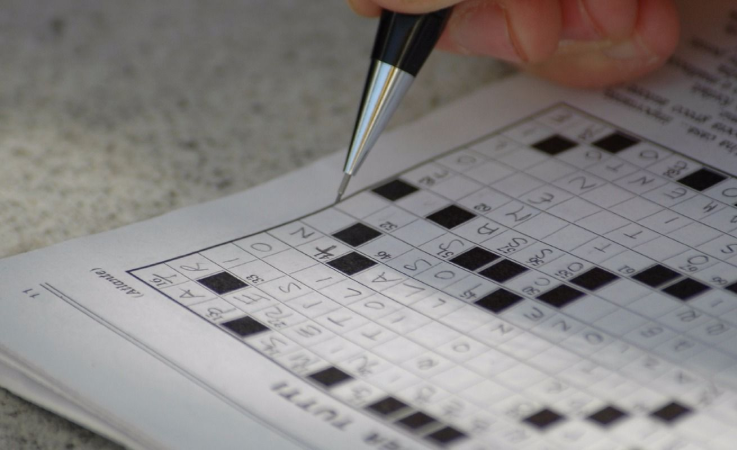How to solve a cryptic crossword in 10 simple steps

Crosswords have been around for years. They’re a great way to pass the time on a long commute, exercise your brain and challenge your general knowledge. The only problem being…they’re hard. Very hard! Never fear, however, because Kevin Skinner, an expert crossword compiler and solver, has released some cryptic crossword clues and tips in his book to help you. Now you can be a crossword solver and tackle tricky crossword puzzles online. Get cracking those clues!
1) Insert commas into a clue sentence.
For example ‘Stay for the leftovers’ sounds odd without the use of commas, but insert them after for, and it becomes logical and reasonable. Someone who ‘stays for’ REMAINS and so are LEFT-OVERS. The answer therefore, is REMAINS. By mentally inserting commas when solving a cryptic clue, this allows the crossword solver to decipher and break down the clue.
2) Recognize an anagram
A straight clue will always be the opening word or closing word, and anagrams are usually placed here. An anagram is a word that has the letters mixed up, so it is spelling another word. You need to recognize the ‘fake’ word and re-order or move the letters around. Not forgetting the mental comma, look at the example below: I TRIED / TO BE ORGANISED / AND NEATER. The answer is tidier and the anagram is in the first word(s).
3) Make notes
It is very important to make notes. Once you have inserted the imaginary comma, the proceeding word or words will indicate a letter (s). By jotting these down, the answer will be staring up at you from the blank piece of paper. When working out the anagram, try to write the letters down, so the word you’re trying to find will be visually easier for you to solve.
4) Know your word exchanges
These are strung together to form the multiple word (or words) for the answer. Whilst there are literally thousands of words that can be exchanged for other words (writer/pen, vehicle/car, married/wed), the more crossword puzzles you do, the easier it will be to recognize these exchanges.
5) Look for the prompt
A word hidden in two words is one that conceals the answers. Read through the words provided, taking the last part of one word and the beginning of the following word until a whole word is uncovered. For example: AMONG THE WEED I’LL FIND A HERB Reading through the sentence there is no such word as ongt or thew, but there is the word dill, which is a type of herb. The prompt or keyword in this sentence is among.
6) Make use of numbers
Numbers, numeric words and Roman numerals are often used to obtain a letter, or a few letters, which help towards solving the other clues in the sentence. A number of these examples are below: one = I 10 or ten = x 50 or fifty = L 100 or one hundred = TON or C HE (He) IS 50-50 (L) TO ARRIVE AT SATANS HOME The answer to the above clue is hell.
7) Don’t forget that words will sometimes be abbreviated
Often, a lot of words in the clue sentence are actually abbreviated from something else. There are too many to list here, but there are plenty of examples in Kevin Skinner’s book that you can check!
8) Check for double meaning words
There are lots of words in the English language that are spelled the same, but have completely different meanings. These words are deliberately used to mislead you and make you think of something entirely different. Keep an eye out for these tricky teasers, which can easily trip you up!
9) Keep an open mind
Read sentences or words with a completely open mind. This will allow you to spot the double meanings, abbreviations and prompts.
10) Be aware of other clues
Look for clue sentences that include words such as ‘sounds like’ or ‘we hear,’ have leaders and heads or removed letters from words.
For more detail on any of the above tips, read How to Solve Cryptic Crosswords (Robinson) by Kevin Skinner


